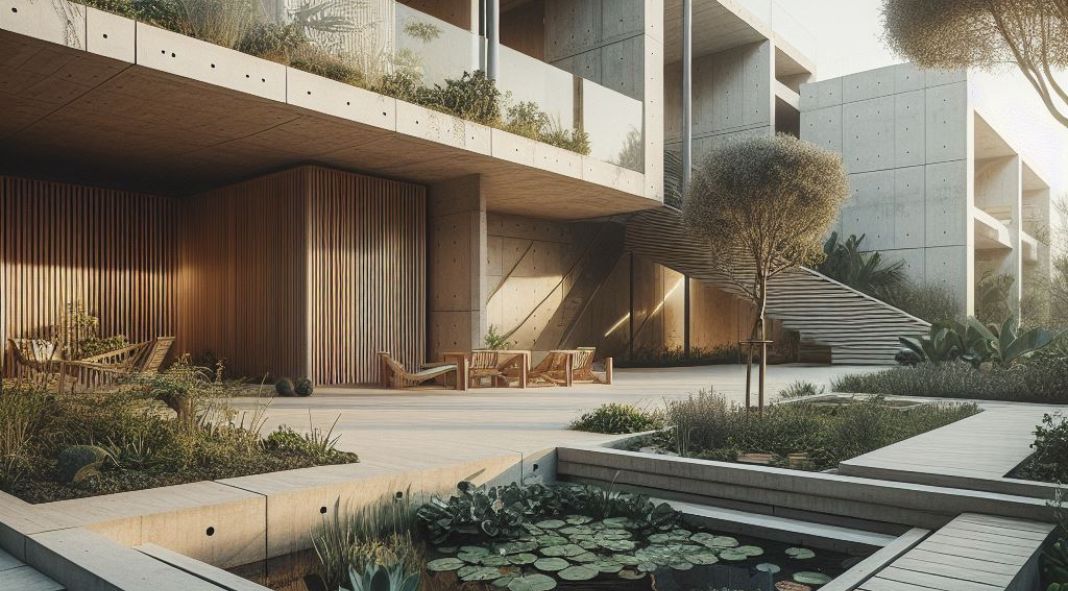Architecture, at its core, shapes our world. But in an era of rising environmental concerns, the way we build needs a conscious shift towards sustainability. This isn’t just a box-ticking exercise; it’s about crafting structures that minimize their impact on the planet, while maximizing the well-being of their inhabitants. Buckle up, architecture aficionados, because we’re diving deep into the coolest (and most impactful) sustainable design practices!
Reducing Environmental Impact: Every Penny Counts
Let’s face it, construction leaves a footprint. But sustainable design strategies like life-cycle assessment help us understand a building’s impact from cradle to grave. This means choosing locally sourced materials to minimize transportation emissions, opting for renewable resources like bamboo or timber, and even considering deconstructable designs for future repurposing. Every choice, from foundation to finishing touches, matters!
Energy Efficiency: Power Up, Without Draining the Planet
Buildings are notorious energy guzzlers. But fear not, efficiency warriors! We’ve got an arsenal of tools. Passive design harnesses the power of nature, optimizing sunlight, ventilation, and thermal mass to reduce reliance on mechanical systems. Think strategically placed windows, clever shading, and airtight construction – think buildings that breathe with the environment! And when active systems are needed, high-performance insulation, smart appliances, and renewable energy sources like solar panels and geothermal systems take center stage. Imagine buildings generating their clean energy – pretty powerful, huh?
Recycled Materials: Giving Waste a Second Life
Waste not, want not! Sustainable design embraces the circular economy, where materials get a second (or even third) chance. Recycled steel, reclaimed wood, and repurposed elements not only reduce demand for virgin resources but also add a unique character to a building. Imagine exposed brick walls whispering stories of their past lives, or concrete floors crafted from recycled demolition debris – each imperfection becomes a badge of sustainability.
Nature’s Embrace: Where Buildings and Beauty Blossom
Sustainable design isn’t just about reducing negative impacts; it’s about fostering positive ones. Integrating nature into buildings creates vibrant, healthy spaces that benefit both people and the planet. Imagine living walls filtering air and providing natural insulation, rooftop gardens bursting with fresh produce, or open courtyards inviting sunlight and fostering biodiversity. These aren’t just aesthetic flourishes; they’re biophilic designs in action, connecting us to the natural world and promoting well-being.
More Than Just Buzzwords: Putting Sustainability into Practice
Sustainable design isn’t just a cool trend; it’s the future of architecture. By collaborating with ecological engineers, material scientists, and landscape architects, we can create buildings that are not only beautiful and functional but also leave a positive legacy. Building certifications like LEED and Living Building Challenge provide valuable frameworks, but true sustainability goes beyond labels. It’s about a mindset, a continuous commitment to pushing boundaries and innovating for a healthier planet.
So, the next time you admire a building, look beyond its facade. Ask yourself: How does it interact with its environment? Does it conserve resources? Does it nurture life? The answers will tell you whether it’s truly building green, and contributing to a future where architecture and nature thrive in harmony.
Remember, this is just the tip of the iceberg! The world of sustainable design is vast and exciting. So, keep exploring, keep questioning, and keep dreaming of buildings that are good for us and good for the planet. After all, the future of architecture is green, and it’s waiting to be built!
Feel free to browse through the Architecture section on WE AND THE COLOR to find inspiring projects from all over the world.
















